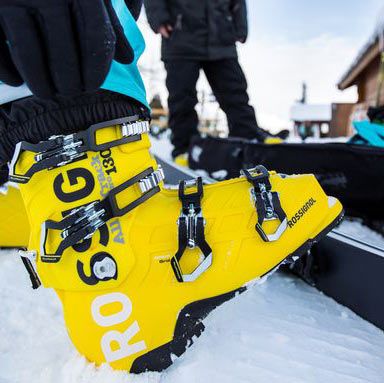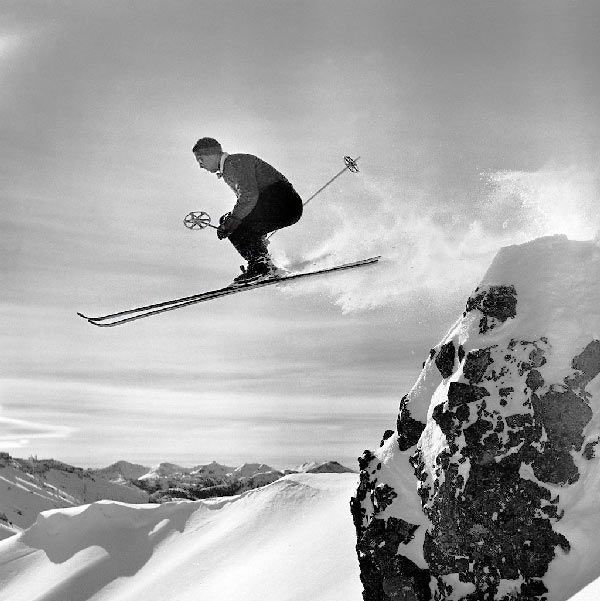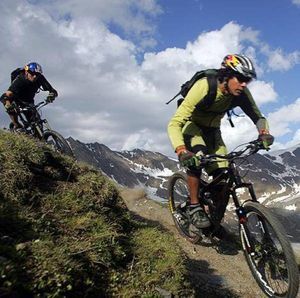 Mountain bike
How simple things were when it came to choosing a bicycle thirty years ago! For ordinary consumers, bicycles were simply divided by age categories — toddlers were bought children’s bikes with inflated tires, then kids moved on to “Schoolboy” models, later to “Orlyonok,” and finally, everyone transitioned to “adult” models, available in standard or “women’s” designs. The only real variety came with folding or touring bicycles, which, however, didn’t differ much from the regular ones — “hand” brakes and a small range of gears.
Mountain bike
How simple things were when it came to choosing a bicycle thirty years ago! For ordinary consumers, bicycles were simply divided by age categories — toddlers were bought children’s bikes with inflated tires, then kids moved on to “Schoolboy” models, later to “Orlyonok,” and finally, everyone transitioned to “adult” models, available in standard or “women’s” designs. The only real variety came with folding or touring bicycles, which, however, didn’t differ much from the regular ones — “hand” brakes and a small range of gears.
Now the selection in bike shops is absolutely mind-boggling! There’s a tremendous number of models across a variety of categories, each designed for specific uses and operating conditions. Mountain bikes, or MTBs, have gained particular popularity.
What Mountain Bikes Are Designed For
 Photo of mountain bikes
Although all mountain bike models share the word “mountain,” their application areas vary widely. Before choosing a specific bike, you need to clearly define: “What do I need an MTB for?”
Photo of mountain bikes
Although all mountain bike models share the word “mountain,” their application areas vary widely. Before choosing a specific bike, you need to clearly define: “What do I need an MTB for?”
If it’s just a matter of showing off your “coolness” to friends and planning to ride on city streets, it’s not worth spending money, since a good mountain bike is not cheap.
So, the main use cases for a mountain bike include:
Extreme downhill riding: downhill — on a prepared track, or freeride — off-road downhill riding.
Cross-country — high-speed cycling across rugged terrain.
Street riding — extreme urban cycling, overcoming artificial obstacles.
All-mountain — a middle-ground between cross-country and downhill, suited for flat and mountainous off-road.
Bike touring, combining road and off-road riding. For this purpose, hybrid models are often used, which blend the durability and off-road capability of MTBs with the efficient performance of road bikes.
Dirt jumping — aerial bicycle acrobatics, performing tricks during jumps from single or multiple ramps.
Trials — overcoming various complex obstacles with precision.
The last two use cases typically require BMX bikes, which have specific design features distinct from MTBs.
So, once you’ve determined the purpose of your mountain bike, you can start selecting a model based on specific parameters.
Where to store a bike in winter Learn more about where and how to store a bike in winter on our website.
For unique types of winter extreme sports, check out this page . Drytooling, snow scoots, snow kayaking, and more…
Wheels, Brakes
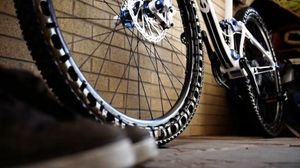 Wheels of a mountain bike
A mountain bike is designed to handle heavy loads, which makes the strength of the wheels and the reliability of the brakes mandatory requirements.
Wheels of a mountain bike
A mountain bike is designed to handle heavy loads, which makes the strength of the wheels and the reliability of the brakes mandatory requirements.
Typically, most mountain bikes are equipped with 26-inch wheels (hybrid models are an exception — their wheel diameter can be 28 inches). The tires are either aggressive or moderately aggressive, with prominent tread lugs.
If you anticipate that much of your riding will take place on paved roads, it’s better to opt for semi-slick tires, as aggressive tires on the road will unnecessarily tire you out without any noticeable benefit. Alternatively, if your budget allows, you could invest in interchangeable setups to make your MTB truly all-terrain.
You must pay attention to the rims. If they’re made of steel, it’s best to politely decline — they’re heavy, short-lived, and prone to corrosion. The primary material for rims is aluminum alloys. Some rims may have anodized coating — these are slightly more expensive and are easily recognizable by their black color.
Don’t skimp — it’s better to buy double-wall rims right away. They’re much stronger, can handle higher loads, and are far less prone to developing “wobbly” deformities.
There’s some debate about the choice of brakes. Some strongly recommend sticking to old-school rim brakes, while others are staunch supporters of disc brakes. Each type has its own advantages and disadvantages.
Rim brakes are simpler to repair and maintain but are much more affected by dirt and water, which is common when riding on rough terrain. Their effectiveness decreases sharply if the wheel has developed a “wobble.” Additionally, rim brakes cause faster wear on the rim, and during intense and frequent braking, the rim can become very hot. If you decide to opt for rim brakes, it is best to choose v-brake models—brakes with parallel pad movement (not caliper or cantilever).
Disc brakes are increasingly replacing rim brakes thanks to their numerous advantages. They offer excellent braking efficiency, better responsiveness to the amount of force applied to the brake lever, are weather-resistant, have a long lifespan, do not cause rim wear, and are not sensitive to rim deformations. The downside is their slightly greater weight, higher cost, and the potential risk of damage to the brake disc or dislodging the wheel when hitting an obstacle.
Brake systems can operate via either a mechanical cable or hydraulic mechanism. For downhill, freeride, and trial biking, hydraulic disc brakes are typically installed.
Frame and Suspension
 Photo of a mountain bike
Modern MTB bikes may be equipped with frames made of steel, aluminum, titanium, or carbon (sometimes a combination of different structural materials is used).
Photo of a mountain bike
Modern MTB bikes may be equipped with frames made of steel, aluminum, titanium, or carbon (sometimes a combination of different structural materials is used).
Steel frames are the most affordable, but this doesn’t mean they are the worst. Steel has several advantages over other materials:
Steel frames are durable while also offering some flexibility, which absorbs impacts and vibrations well.
Though susceptible to corrosion, steel frames are very long-lasting with proper care. They are also easy to repair.
A bicycle with a steel frame offers excellent roll ease.
The main disadvantage of steel frames is their heavy weight. However, for certain types of biking where weight is less critical (e.g., downhill), they can be a perfectly acceptable solution.
Bicycle tires Want to know how to correctly choose bicycle tires ? Learn all the details on our website.
Discover how to equip your bicycle with a motor in this guide on our website.
Want to learn how to ride on the back wheel and impress your friends? Check out this page .
Aluminum frames (more precisely, made from aluminum alloys) are more expensive. They are significantly lighter than steel frames without sacrificing strength. Aluminum allows for the design of complex frame geometries to suit different types of bicycles. With these MTBs, it is easier to climb hills, and they quickly gain speed on flat terrains, though they may lack smooth momentum.
The primary drawback of aluminum frames is their stiffness, which amplifies vibrations, especially on bad roads. Aluminum is resistant to corrosion but tends to accumulate “metal fatigue”—over time, the frame might unexpectedly fail at the most inconvenient spot, and repairs are very challenging.
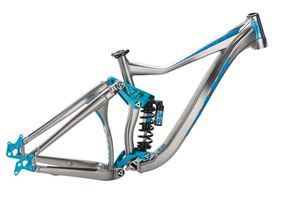 Bicycle frame
Titanium frames are undoubtedly an ideal option since the metal combines the advantages of both steel and aluminum. They are strong, extremely durable, corrosion-resistant, and effectively absorb impacts and vibrations. However, they are primarily targeted at professionals because bicycles with titanium frames are very expensive.
Bicycle frame
Titanium frames are undoubtedly an ideal option since the metal combines the advantages of both steel and aluminum. They are strong, extremely durable, corrosion-resistant, and effectively absorb impacts and vibrations. However, they are primarily targeted at professionals because bicycles with titanium frames are very expensive.
Carbon frames (if made from quality material) are highly reliable and durable. However, the cost of well-made branded carbon frames is extraordinarily high. It’s not recommended to buy cheap models marketed as carbon; such frames are highly susceptible to localized impacts and won’t last long.
When choosing a bicycle, special attention should be given to the frame height. There should be a gap of at least 8-10 centimeters between the cyclist’s crotch and the top tube when standing astride the bike to prevent injuries.
The saddle should be adjustable in height. The optimal saddle position is level with the prominent hip bone.
It’s worth noting that the seating position on mountain bikes differs from road bikes—the primary load is on the rider’s arms and legs. The body should always lean forward to prevent spinal injuries when riding on uneven terrain.
One characteristic feature of most mountain bikes is the presence of suspension.
There are three types of MTB setups: rigid frames, hardtails (rigid frame with a front suspension fork), and full suspension (rear wheel suspension included).
Rigid frames are usually found in dirt or trial bikes, where precision handling is crucial.
Hardtails are more commonly used for cross-country (XC) or hybrid bikes.
Full suspension setups are utilized in downhill and freeride biking, where maximum wheel contact with the surface is essential.
Depending on the bike’s intended use, suspension forks vary in travel range. For downhill biking, the travel should be 160-200 mm, while for cross-country, 80-100 mm is sufficient. Adjustable forks and rear shock absorbers, which can adapt to the track’s terrain, are an excellent feature.
Rope jumping Bungee jumping, rope jumping , base jumping, and other extreme free-fall activities. For those interested in cave trekking, we recommend not missing out on the description of the most fascinating caves in Russia and the CIS.
Do not rush to buy hardtail or full-suspension bikes priced at $200–$300. These are merely imitations of a “soft” suspension system, which will not function as it should and, in some cases, can even pose a danger to the cyclist. A suspension system is a high-tech and complex mechanism that comes with a significant price tag. The cost of a good full-suspension bike starts at approximately $800.
Mechanics and Pedals
 Shimano Mechanics
The leaders in the production of mechanical gear are the companies Shimano (Japan) and Sram (USA). If a bike is equipped with components from these brands, it is already an indication of its quality.
Shimano Mechanics
The leaders in the production of mechanical gear are the companies Shimano (Japan) and Sram (USA). If a bike is equipped with components from these brands, it is already an indication of its quality.
Both companies offer a wide range of components, from budget-friendly recreational options to ultra-high-tech professional kits. The number of speeds varies from 9 to 30. For downhill and freeriding, a rear derailleur with 8–9 gears is sufficient, while hybrids should have 27–30 gears.
On the other hand, dirt jump or trial bikes do not come with any gear-shifting capabilities at all.
High-quality mechanics include a convenient location and configuration of shifters (gear levers) and ease of use.
Experienced cyclists do not recommend purchasing an MTB with a twist-grip shifter on the handlebar—in wet weather or mud, the grip may slip, and there is also a chance of accidental shifting during hard impacts to the front wheel.
A few words about pedals. Without hesitation, you should avoid cheap plastic recreational pedals—they won’t last long, especially for extreme riding. MTBs require special platform pedals (sometimes called “flat pedals”) made of aluminum alloy, with a wide, “aggressive” surface often equipped with pins.
More professional options include pedals with platforms and cleats, which ensure a secure connection with the cyclist’s shoes and largely solve the “dead spot” problem. When choosing a specific model, pay attention to the ease of unclipping the cleats to avoid issues in case of potential falls.
Which Bike Brand to Choose?
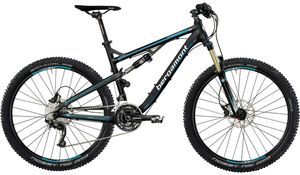 Bergamont Bicycle
If you’re planning to spend a substantial amount on a mountain bike, it’s best to opt for models from leading global manufacturers. American brands such as Cannondale, Felt, GT, Specialized, German brands like BMW M Bike, Cube, Wheeler, as well as Taiwanese companies Giant and Merida, have earned an excellent reputation.
Bergamont Bicycle
If you’re planning to spend a substantial amount on a mountain bike, it’s best to opt for models from leading global manufacturers. American brands such as Cannondale, Felt, GT, Specialized, German brands like BMW M Bike, Cube, Wheeler, as well as Taiwanese companies Giant and Merida, have earned an excellent reputation.
The German company Bergamont, young but very successful, is rapidly gaining popularity in the MTB category, with growing demand even beyond Europe. The company’s work demonstrates excellent collaboration with the scientific team of the Hamburg University of Technology, where all key theoretical design developments take place.
Any new product, before reaching the production floor, undergoes multi-stage testing in the most extreme conditions, with computer analysis of the effects of all possible loads. Quality control during production is exceptionally high, so there’s no doubt about the reliability of Bergamont mountain bikes.
Interestingly, the company, to conduct real-world testing in extreme conditions and maintain its impressive reputation, has its own professional teams participating in various riding disciplines.
Athletes, using only their branded MTB “Bergamont”, consistently rank among the leaders in world-class competitions.
The appeal of this company’s models also lies in their combination of top-notch quality and reasonable pricing.
For example, an excellent hardtail, the Bergamont Revox 3.3, featuring an aluminum frame, disc brakes, and 24 speeds, is available for 17,000–18,000 rubles. A simpler model, which is perfect for beginners, the Bergamont Vitox 5.3, with rim brakes and 21 speeds, costs only 10,000 rubles.


